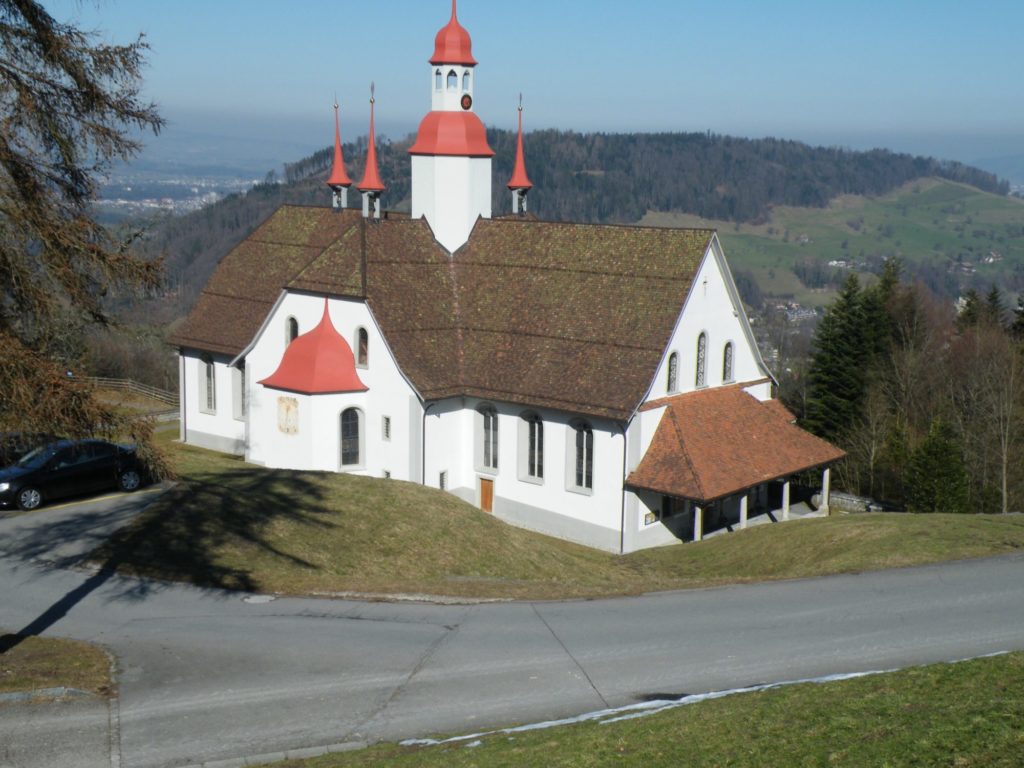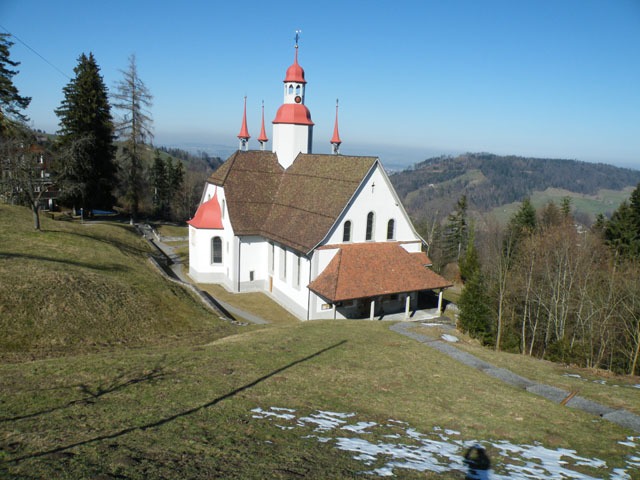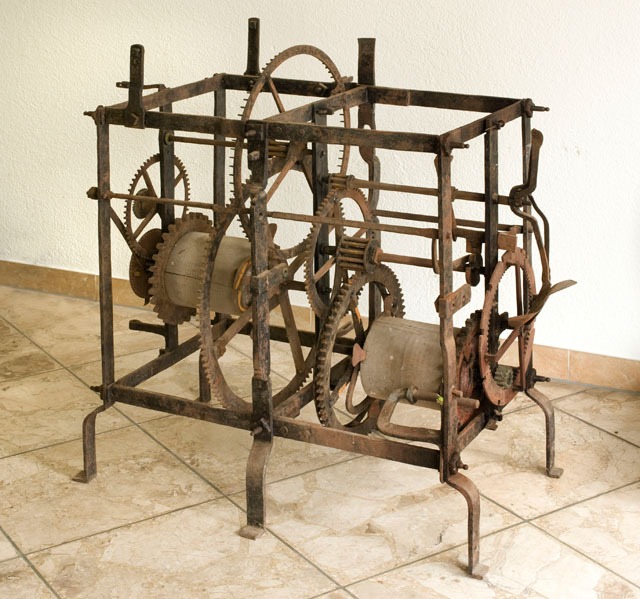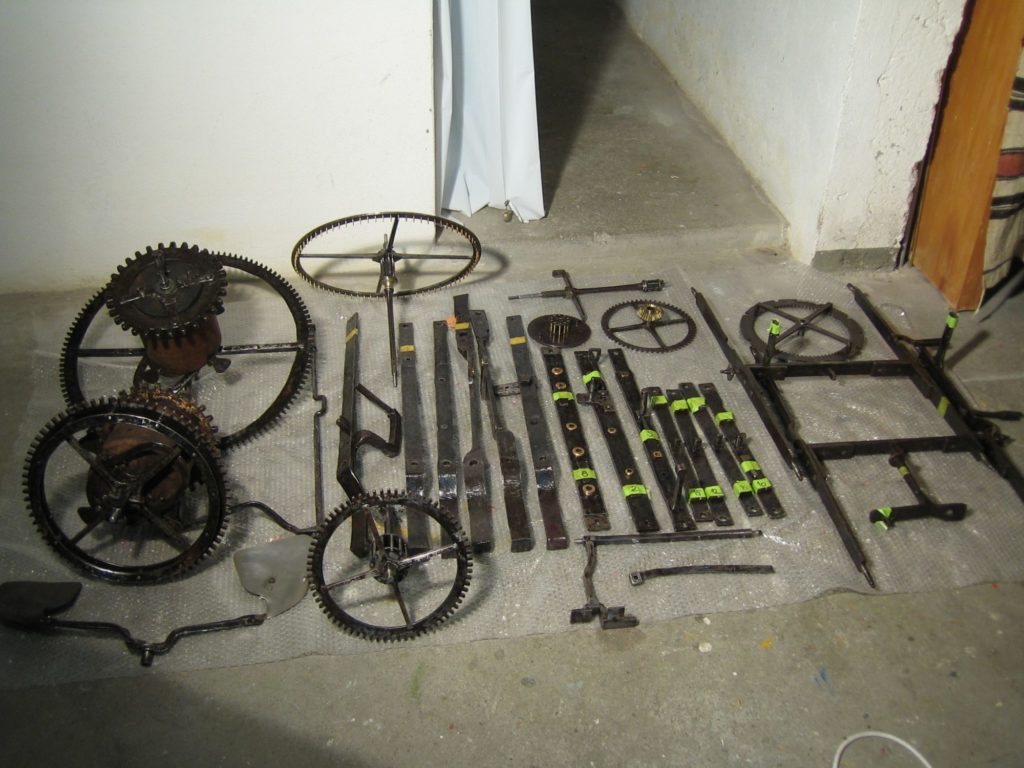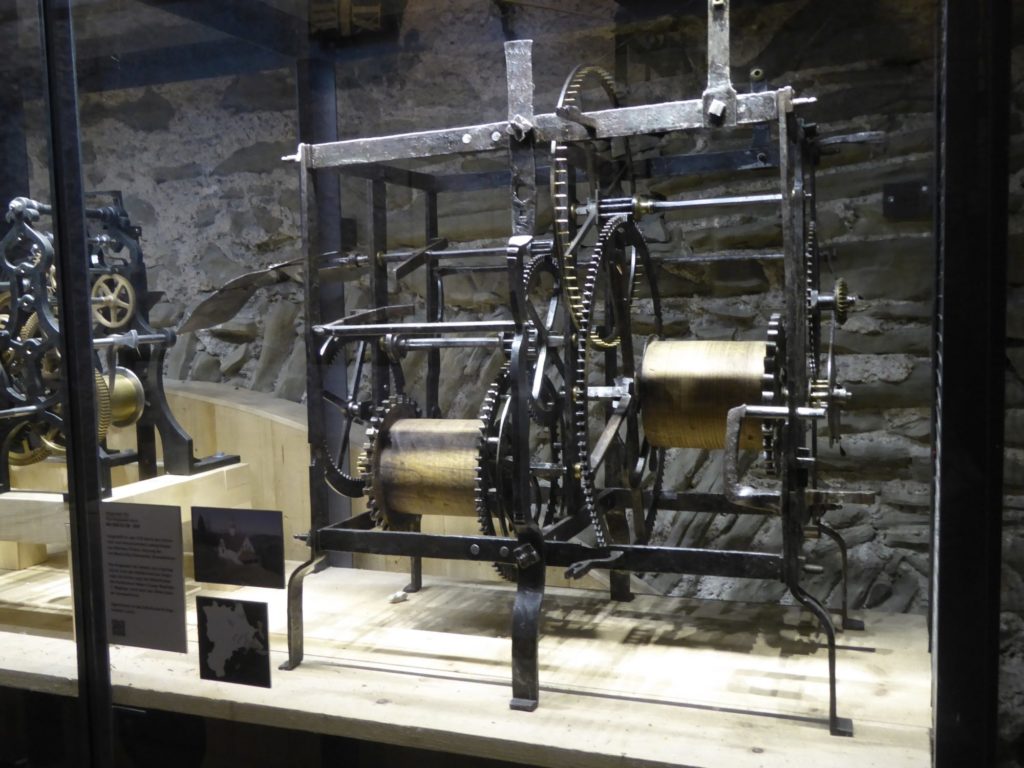
The Hergiswald clock
Arriving from the south of Germany in 1489 the hermit Johannes Wagner settled in Hergiswad – on the road from Kriens to the Eigental. He took his fresh water from a natural spring and soon the place and his hermitage were known for miraculous forces. At the beginning of the 16th century the Lucerne councillor Jakob von Wyl had a dwelling with an altar built for the hermit.
In the 17th century it took various building steps to finally erect a church for pilgrimage. The church interior includes a Loreto Chapel and a so called picture canopy depicting Christian virtues in 333 emblematic pictures. This painted panelling ceiling inside the church was created in 1654 by Caspar Meglinger, a significant representative of late Renaissance painting in Switzerland, who also created the Dance of Death on the Chaff Bridge in Lucerne.
The church for pilgrimage must have had a clock already at an early stage. In 1699 the church bells were renovated and in 1711 the Hergiswald clock was manufactured by the clock-maker Klingler from Obernau (Kriens). Klingler was the owner of a scythe-smithy in Kriens which was situated not too far away from the nail-forge on the Krienbach. The nail-forge was operated by Johann Peter von Moos, who with this establishment laid the foundations for the Von Moosche Steelworks in Emmen in the 19th/20th century.
The clock was in the steeple above the squaring of the church for pilgrimage and consists of clock-work and striking work. In 1858 the clock-work was converted into today’s pivot escapement. The striking work has remained unchanged to this day.
